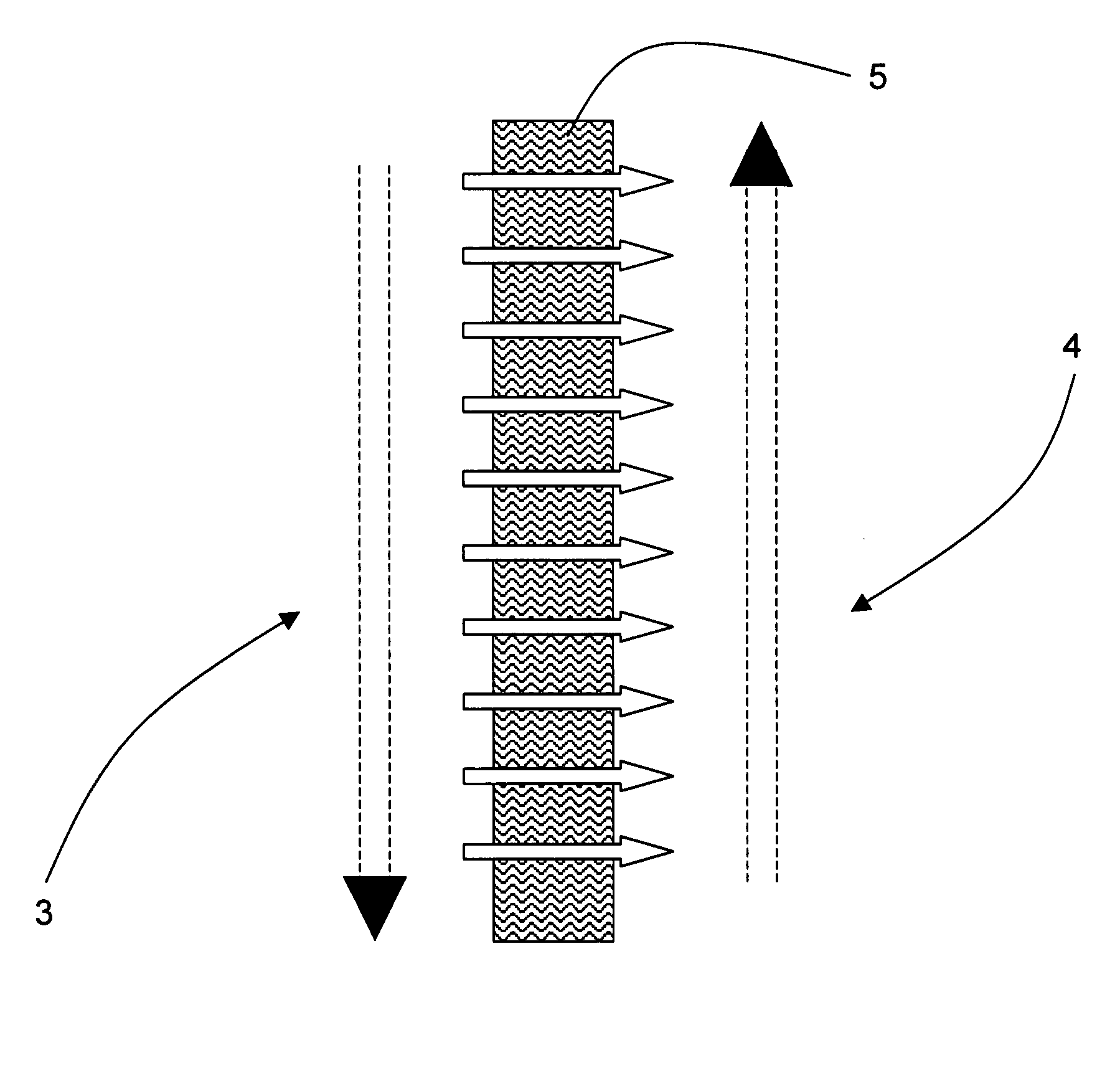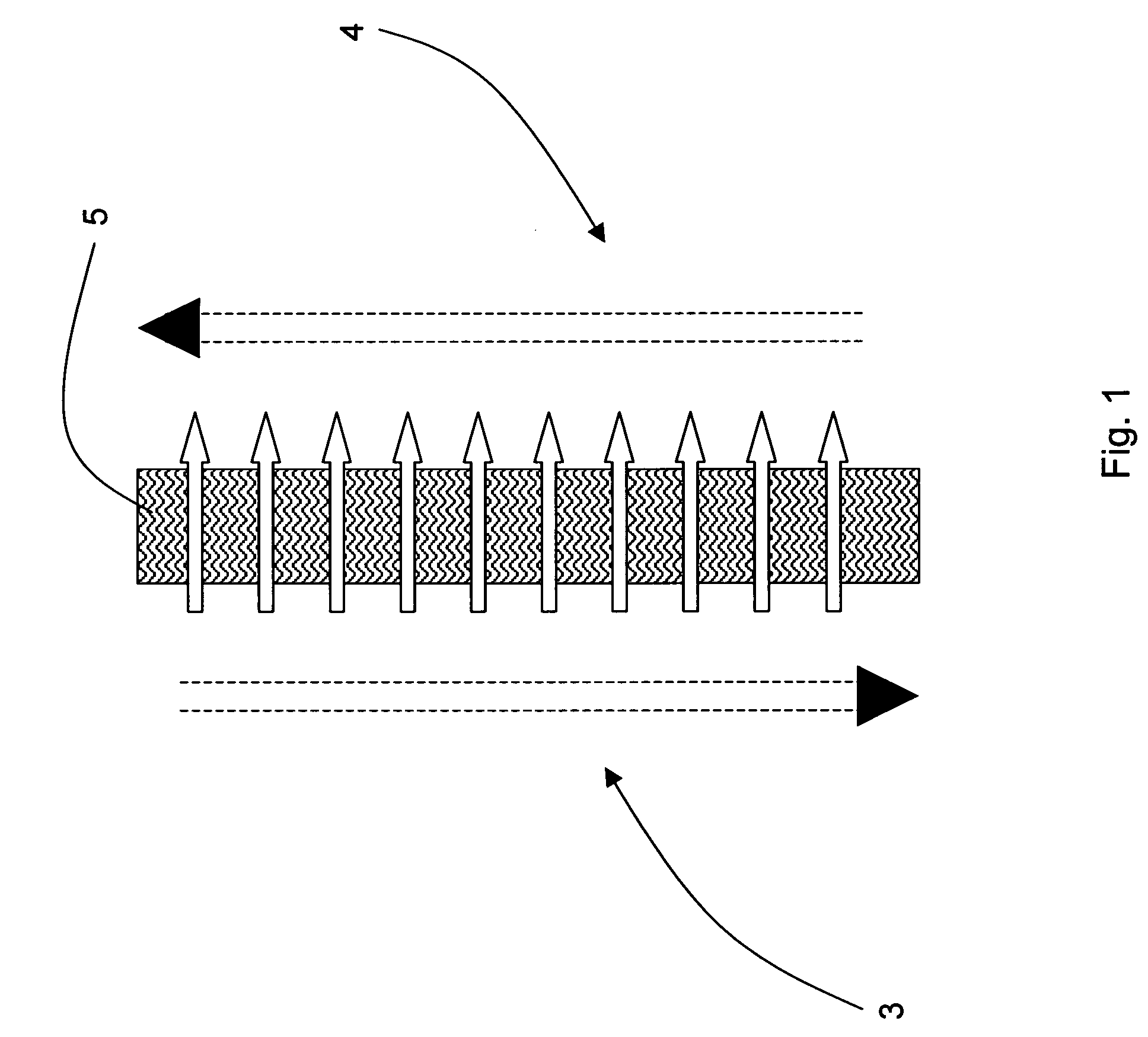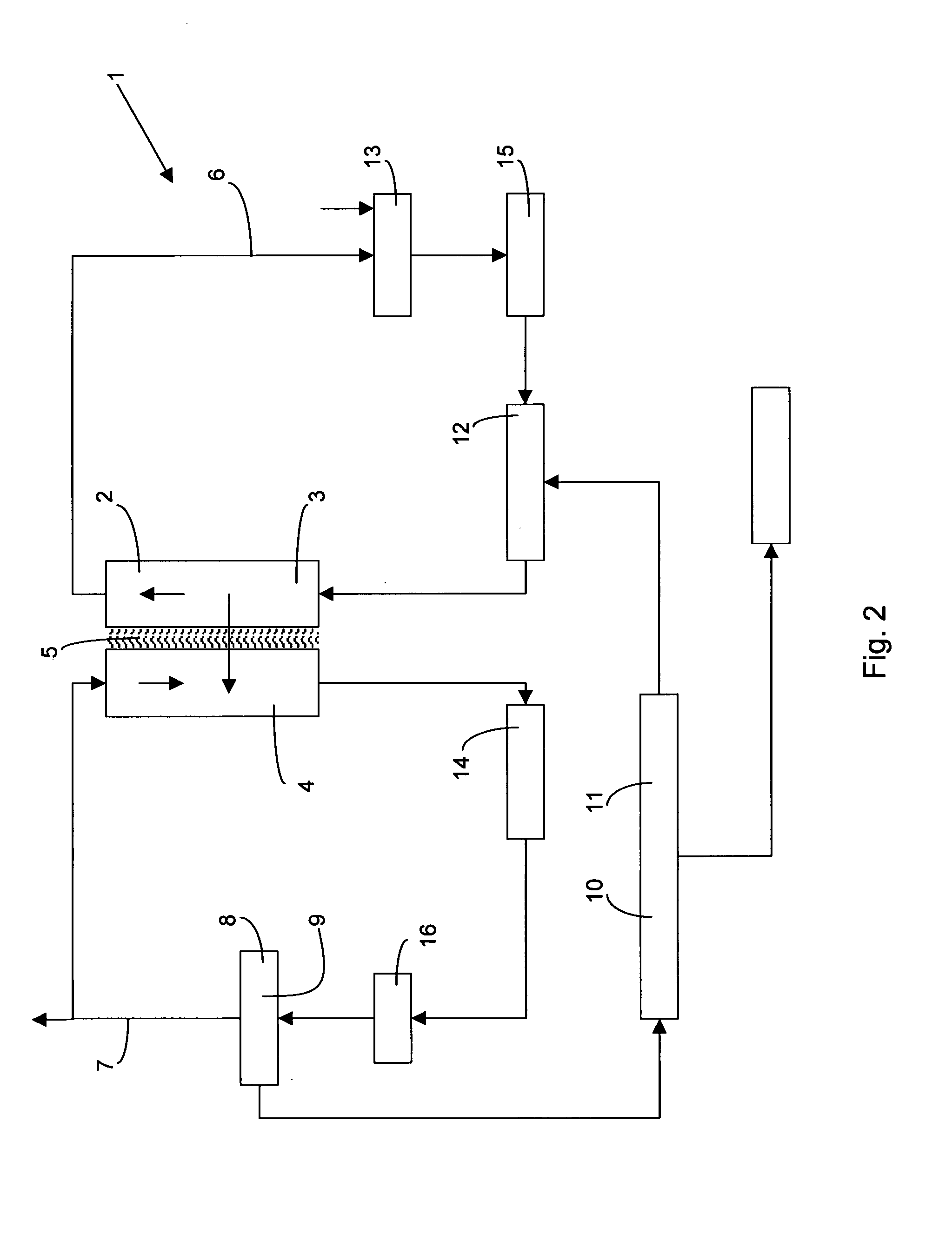Apparatus and Method for Concentrating A Fluid
a technology of concentrating fluid and apparatus, which is applied in the direction of distillation, membranes, separation processes, etc., can solve the problems of poor consumer acceptance of lower quality final products, product deterioration, and not all concentration unit operations may be appropriate, so as to improve the response time to temperature control, improve the thermal response time, and prolong the thermal response time
- Summary
- Abstract
- Description
- Claims
- Application Information
AI Technical Summary
Benefits of technology
Problems solved by technology
Method used
Image
Examples
examples
[0097]The present invention will now be described with reference to the following example, which should be considered in all respects as illustrative and non-restrictive.
[0098]A bench-scale MD process was adapted according to the present invention for concentrating glucose (shown schematically in FIGS. 2 and 3), and was operated at the following conditions:[0099]Feed fluid inlet temperature −Tfi=40° C.[0100]Permeate inlet temperature −Tpi=20° C.[0101]Velocities of the feed fluid ωf=0.6 m·s−1 [0102]Velocities of the permeate fluid ωf=0.5 m·s−1 [0103]Feed fluid was a glucose solution at 30% (w / w)[0104]Membrane module HL50 (Siemens Water Technologies, Australia)[0105](FIG. 4 note: Tfo=temperature of the feed outlet, and Tpo, is the temperature of the permeate outlet)
[0106]A glucose solution was concentrated from 30 to 60% (w / w) (4.2 kg of glucose) over approximately 13 hours (this time would be shorter if a module with larger membrane area was available). The temperature change of the ...
PUM
| Property | Measurement | Unit |
|---|---|---|
| temperature | aaaaa | aaaaa |
| vapour pressure | aaaaa | aaaaa |
| temperature | aaaaa | aaaaa |
Abstract
Description
Claims
Application Information
 Login to View More
Login to View More - R&D
- Intellectual Property
- Life Sciences
- Materials
- Tech Scout
- Unparalleled Data Quality
- Higher Quality Content
- 60% Fewer Hallucinations
Browse by: Latest US Patents, China's latest patents, Technical Efficacy Thesaurus, Application Domain, Technology Topic, Popular Technical Reports.
© 2025 PatSnap. All rights reserved.Legal|Privacy policy|Modern Slavery Act Transparency Statement|Sitemap|About US| Contact US: help@patsnap.com



